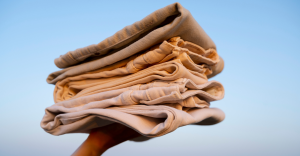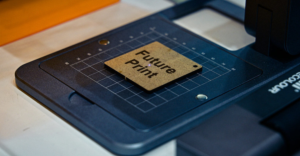In fashion, a patch is a piece of fabric with an image, slogan, or symbol that is sewn or attached to clothing. In this context, custom patches have gained prominence as fashion and decoration items, and are widely used on clothing, backpacks, and accessories. Their popularity in today’s pop culture is driven by nostalgic appeal and the ability to personalize, a differentiator that adds value to products and opens up new business opportunities for companies and entrepreneurs in the industry.
But how do you produce high-quality patches and turn them into a revenue stream? In this FuturePrint content, you will learn more about the entire manufacturing process, from design to production to sales of these products.
Custom Patches: Start with the Design
To ensure the appeal and value of the final product, creating a design is the first step in producing custom patches. Here are some options:
- Logos: important for companies that want to reinforce their visual identity on backpacks, accessories, or team uniforms.
- Custom illustrations and drawings: ideal for artists or exclusive projects, commemorative campaigns or themed gifts.
- Phrases or slogans: suitable for creative and inspiring messages.
- Tip: Simple shapes with defined contours make it easy to apply.
To develop the design, software such as Adobe Illustrator, CorelDRAW or free options such as Canva and Inkscape are good indicators – always depending on the technical skills of each professional. Remember to create the file in high resolution and consider the final patch size, which is usually between 5cm and 12cm.
After creating the image, you will need to convert it to an embroidery file with extensions such as DST, PES and JEF. Programs such as Embird or Wilcom can help you convert your file to one of these formats.
Materials Needed to Create a Custom Patch
To create quality patches, you’ll need certain materials, such as:
- Base fabrics: Felt, canvas, or polyester are most commonly used.
- Embroidery thread: Ensure a wide range of colors, quality and durability.
- Heat adhesive: Facilitates application on different surfaces.
- Tools: Iron, scissors, embroidery or sewing machines.
Choose quality products to ensure durability and professional finish.
4 Patches Production Techniques
There are several ways to produce custom patches. The choice depends on the style you want and the equipment available. Below are the main techniques:
- Embroidery:
- Ideal for a classic and detailed finish. According to Maik Pereira, Product Specialist for Embroidery and Textile Printer Machines at Brother Brasil, more and more consumers are looking for something unique and exclusive. “With the embroidery technique, this can be realized, for example, a jacket with the embroidered patch logo of your favorite band,” he commented in an interview with FuturePrint.
- An embroidery machine is required.
- Patchwork
- It combines pieces of different fabrics to create a unique and handmade look.
- It requires sewing skills to get a good finish.
- Sublimation:
- Allows digital images to be applied directly to fabric.
- Requires specific printers and papers for sublimation.
- Application of thermal adhesive:
- Simple and convenient, it’s great for those just starting out.
- Just cut the patch, apply the adhesive and iron it on.
These techniques offer options for different budgets and experience levels. Research each option, keeping in mind expected results and profits, to determine the best choice for your business.
Custom Patches: Tips for Getting Started
To take custom patch production to a professional level, follow these tips:
- Choose fabric: Thick fabrics, such as canvas or felt, provide more texture and durability.
- Finishing: Add bias band, decorative embroidery, or even beads for a special touch.
- Conservation: Encourage customers to hand-wash patches and avoid high temperatures to preserve colors and adhesives.
Also, try creating themed templates, such as patches for events, music groups, or sports teams. This will increase your chances of attracting specific niches.
Custom patches are a hot trend and offer many opportunities for those who want to get involved. By mastering design, choosing the right materials, and applying the right production techniques, you can create unique, high-quality products.
Start your custom market journey today! Turn your creativity into a profitable business and conquer your space in this market.





